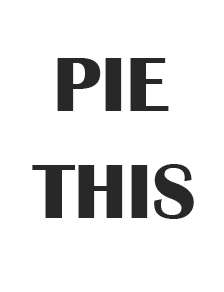When it comes to preserving food freshness and convenience, two popular options stand out: plastic cling film and aluminium foil paper. Both offer unique benefits, but which one is truly the superior choice? Let’s delve into the characteristics of each to help you make an informed decision for your kitchen needs.
Table of Contents
Plastic Cling Film:
Plastic cling film, also known as plastic wrap or cling wrap, is a thin, transparent film made of polyethylene. Its primary feature is its ability to adhere tightly to various surfaces, creating an airtight seal around food items. This seal helps prevent air and moisture from reaching the food, thereby preserving its freshness for longer periods. Plastic cling film is commonly used for wrapping sandwiches, covering leftover dishes, and storing fruits and vegetables.
Aluminium Foil Paper:
Aluminium foil paper, on the other hand, is a thin sheet of aluminium that offers excellent heat retention and insulation properties. It is versatile, durable, and capable of withstanding high temperatures, making it ideal for both cooking and storage purposes. Aluminium foil is often used to wrap foods for baking, grilling, or storing in the refrigerator or freezer. Its reflective surface also helps keep food warm by trapping heat.
Comparison:
Preservation: Plastic cling film forms a tight seal around food, preventing exposure to air and moisture, thus preserving freshness. However, it may not be suitable for high-temperature applications. Aluminium foil, on the other hand, provides excellent insulation and can withstand extreme temperatures, making it ideal for both hot and cold foods.
Versatility: Plastic cling film is flexible and easy to use, conforming to the shape of the food item. It is suitable for wrapping sandwiches, covering bowls, and sealing containers. Aluminium foil, meanwhile, is more rigid but offers superior heat retention, making it suitable for cooking, grilling, and storing a wide range of foods.
Environmental Impact: Plastic cling film is typically made from non-biodegradable materials and can contribute to plastic waste pollution. Aluminium foil, while recyclable, still requires significant energy for production. However, aluminium foil can be reused multiple times, reducing its environmental footprint compared to single-use plastic cling film.
Safety: Plastic cling film is generally considered safe for food use, but there have been concerns about chemicals such as bisphenol-A (BPA) and phthalates leaching into food, especially when heated. While many manufacturers now produce BPA-free cling films, it’s essential to handle them with care, particularly when microwaving food. Aluminium foil, on the other hand, is considered safe for food wrapping and cooking, with no known health risks associated with its use.
Barrier Properties: Plastic cling film provides an effective barrier against odours, flavours, and moisture, helping to keep food fresh for longer. However, it may not provide as strong a barrier against light and oxygen as aluminium foil does. Aluminium foil acts as an excellent barrier against light, oxygen, and moisture, protecting food from spoilage and maintaining its quality over time.
Ease of Use: Plastic cling film is straightforward to use, as it clings tightly to surfaces and is easily cut to size. However, it can sometimes be challenging to handle, sticking to itself or tearing unexpectedly. Aluminium foil is also easy to use, with its rigid structure making it suitable for wrapping and covering various food items. It can be moulded to fit different shapes and sizes, offering flexibility in food storage and preparation.
Cost: Plastic cling film is generally more affordable than aluminium foil, making it a budget-friendly option for everyday use. However, because it is often used as a single-use item, the cost can add up over time. Aluminium foil may have a higher upfront cost but can be reused multiple times, making it a cost-effective choice in the long run.
In conclusion, both plastic cling film and aluminium foil paper have their advantages and applications. For short-term storage and covering purposes, plastic cling film excels in its ability to create a tight seal. However, for cooking, grilling, and long-term storage, aluminium foil paper offers superior insulation and versatility. Consider your specific needs and preferences when choosing between these two food wrap options.
If you’re interested in exploring a variety of food packaging solutions, including plastic cling film and aluminium foil paper, you can visit the Falcon Pack website. Falcon Pack offers a range of high-quality food packaging products designed to meet diverse consumer needs. Visit their website to learn more about their products and find the perfect solution for your food wrapping requirements.


